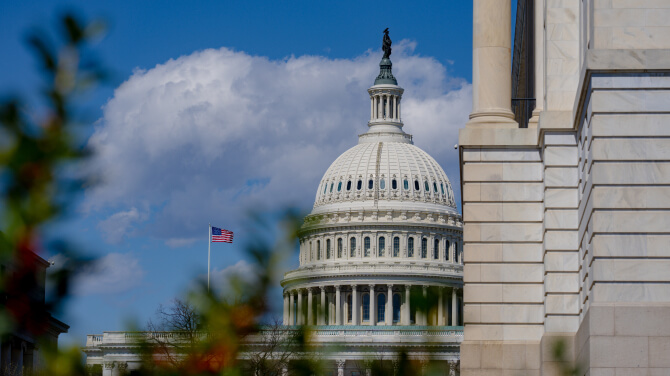Federal Health Policy in 2025: Medicaid reform, Medicare payment pressure, and the road ahead
Federal health policy in 2025 is moving at an extraordinary pace. Since the start of the year, the administration has issued over 160 executive orders, paused or revised key regulatory efforts, and signed the sweeping One Big Beautiful Bill Act (OBBBA) into law. Collectively, these actions create a volatile environment for healthcare organizations trying to plan ahead.
A major driver of this uncertainty has been the Department of Government Efficiency (DOGE), a newly formed body tasked with evaluating federal operations across agencies and streamlining functions of government. DOGE’s work has led to staffing reductions at key federal institutions, including the Department of Health and Human Services (HHS) and its agency, the Centers for Medicare & Medicaid Services (CMS). As a result, healthcare stakeholders are increasingly reporting delays in policy guidance, and routine communication — adding operational strain just as policy changes begin to take hold.
Against this backdrop, athenahealth’s Government and Regulatory Affairs team is working to keep clinicians and healthcare administrators informed through regular webinars, policy guidance, and strategic advocacy updates. Our June 2025 Advocate Policy Webinar brought our community together to make sense of what’s changing and what it could mean for care delivery. Below are key takeaways about recent policy changes introduced in the OBBBA, including Medicaid reform, Medicare payment policy, and areas like telehealth where bipartisan momentum is providing some stability.
Medicaid in 2025: Restructuring from the inside out
Among the most closely watched elements of this year’s federal health policy agenda is Medicaid reform.
Key Medicaid changes in the One Big Beautiful Bill Act include:
- Work Requirements: Starting December 31, 2026, adults ages 19+ must complete at least 80 hours per month of work, school, or community service to maintain Medicaid coverage — unless they qualify for a “hardship” exemption. Parents and guardians may be exempted, but only if their state opts in. While framed as promoting workforce participation, similar efforts in the past have led to large coverage losses — often for administrative reasons unrelated to employment status.
- Six-Month Redetermination Cycles: Medicaid and CHIP eligibility reviews will now occur every six months — doubling the administrative burden and increasing the risk of paperwork-related coverage losses. Even small delays in form processing or system errors could mean millions losing coverage temporarily — or permanently.
- Cost-Sharing Changes: New $35 co-pays are being introduced for many non-primary care and mental health services, which may affect Emergency Department use and increase out-of-pocket burdens for vulnerable patients.
- Immigration-Related Eligibility Restrictions: Certain legal immigrants will no longer be eligible for Medicaid, CHIP, Medicare, or ACA marketplace subsidies. Undocumented individuals remain ineligible, but the new changes significantly impact access for many lawfully present patients.
- Medicaid Payment Cap: States will no longer be allowed to pay providers more than Medicare rates, with a limit of 110% in non-expansion states. Some legacy programs will be grandfathered in, but most will face rate compression over the next three years.
- Restrictions on Provider Tax Mechanisms: The bill curbs states’ ability to use provider taxes — a key mechanism for drawing down federal Medicaid funds — aiming to reduce perceived abuse but potentially weakening program sustainability. These taxes have long been a tool to finance Medicaid sustainably, particularly in states with large rural or low-income populations.
- Elimination of Medicaid Funding for Reproductive Health Services: The bill ends federal Medicaid payments to providers offering family planning, reproductive care, or abortion services.
According to the CBO, the legislation is projected to reduce federal Medicaid spending by $793 billion over 10 years, with 10 to 17 million people estimated to lose coverage. This could increase the self-pay population by up to 50%, with serious implications for patients and providers already under financial strain. The burden will fall disproportionately on states with tight budgets and vulnerable populations — deepening regional disparities and threatening provider sustainability in underserved areas.
Proposals under active congressional consideration could fundamentally alter how states administer their Medicaid programs — and who remains eligible for coverage.
A temporary “Doc Fix” but long-term help remains elusive
Medicare payment reform has long been a pressure point in federal health policy. This year, it resurfaced again, reviving memories of the old "doc fix" debates that defined a generation of provider advocacy.
From 1997 to 2025, Medicare’s payment rates were tied to the Sustainable Growth Rate (SGR) formula. Every year, that formula threatened steep cuts — only to be averted by last-minute congressional action. These recurring patches became known as the “doc fix,” and while they prevented immediate payment shocks, they created long-term uncertainty.
The 2015 MACRA law replaced the SGR and promised more predictable payment updates. But since 2001, when adjusted for inflation, Medicare physician payments have decreased 33%, and Congress has struggled to implement meaningful annual updates. In January 2025, Congress allowed a 2.83% cut to Medicare physician payments to take effect, intensifying calls for action.
What advocates hoped for in 2025:
Early drafts of the House budget included a structural fix – increasing Medicare payments in 2026 by 75% and tying future Medicare updates to the Medical Economic Index (MEI) and capping annual increases at 10% of MEI. While imperfect, this would have at least re-established a link between reimbursements and practice cost growth.
What the OBBBA actually did for Medicare payments:
The One Big Beautiful Bill Act delivered a temporary 2.5% increase to the Medicare Physician Fee Schedule for CY 2026. It’s another one-time “fix” not indexed to inflation and will expire in 2027 unless further legislative action is taken. This stopgap approach mirrors “doc fixes” of the early 21st century and fails to address the long-term sustainability of Medicare reimbursement. In short, the structural imbalance between rising practice costs and stagnant Medicare payments remains unresolved.
Telehealth: Rare consensus in a divided congress
One of the few areas drawing bipartisan support this year is telehealth policy. The March 2025 continuing resolution extended Medicare telehealth flexibilities through September 30, maintaining expanded access to virtual visits, remote monitoring, and rural broadband incentives.
The OBBBA goes further:
- Telehealth expenses to be eligible for Health Savings Account (HSA) reimbursement
- High-deductible health plans (HDHPs) can now cover telehealth services before deductibles are met
CMS Administrator Dr. Mehmet Oz called telehealth an area “with no opponents,” signaling confidence in future legislative support. Still, providers and advocacy groups continue pushing for permanence, parity in reimbursement, and inclusion of community health centers and federally qualified health centers (FQHC) in expanded coverage models.
Community Health Center funding: Stability still elusive
FQHCs and CHCs remain funded through the end of the federal fiscal year, thanks to short-term extensions passed this spring. But these stopgaps are part of a longer trend: year-to-year uncertainty that makes it difficult for centers to recruit staff, secure facilities, or expand services in medically underserved areas.
There’s growing bipartisan support for a multi-year funding deal, but it has yet to materialize. Until then, centers are left in a holding pattern.
What comes next in 2025 from a healthcare regulatory standpoint
During the webinar, athenahealth’s Vice President of Government and Regulatory Affairs Joe Ganley emphasized that clinicians and healthcare advocates need to stay engaged now to help shape policy outcomes later.
What physicians can do to track and influence healthcare policy
- Advocate for Medicare payment system reform and stay involved in the FixMedicareNow campaign.
- Advocate for permanent telehealth reforms and multi-year funding for health centers. ATA Action | Act Now: Protect Telehealth Access Before It’s Too Late!
- Stay in touch with policymakers, and share how these changes would affect your patients, your organization, and your community.
athenahealth will continue to monitor developments and provide updates to help our partners navigate policy shifts and what they mean for physicians and healthcare organizations across the nation.












